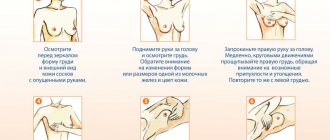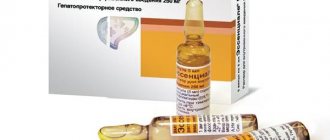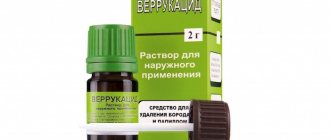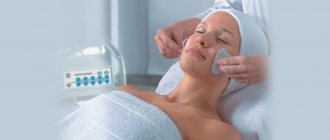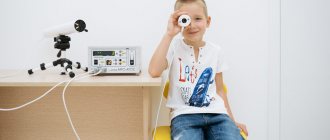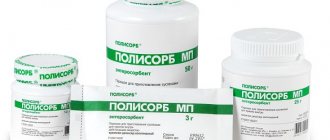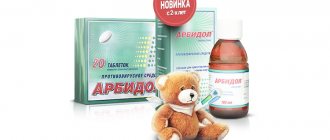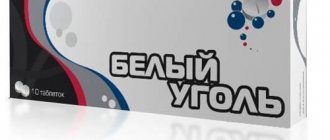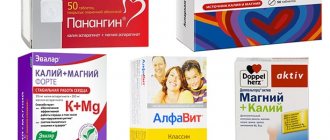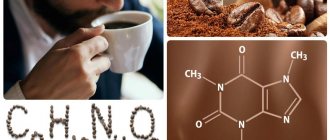Fibrogastroduodenoscopy, or FGDS for short, is an endoscopic method for examining the stomach and duodenum, widely used in clinical practice to diagnose diseases of the upper digestive system. The procedure is suitable for a large number of people, both children and adults, and is carried out using a special probe with a video camera. However, to perform fibrogastroduodenoscopy, the patient must have appropriate indications and no contraindications. Only in this case can the study be successful with little risk to health. FGDS must be carried out with proper preparation of the patient and according to certain rules specified in clinical protocols. Due to the widespread prevalence of diseases of the gastrointestinal tract, every person is recommended to know information about this procedure.
The patient undergoes FGDS
Many patients wonder how FGDS works? You can get more information about this from your doctor.
What is FGDS
FGDS (fibrogastroduodenoscopy) is a method of examining the surfaces of the esophagus, stomach and the beginning of the duodenum using an endoscope. In gastroenterology it is considered the most informative method for making and clarifying the diagnosis.
The examination is carried out with a thin flexible probe 8-11 mm thick, which is inserted through the mouth and esophagus into the stomach. The image is projected onto the screen. There is a type of examination where a probe is inserted through the nose.
Advantages of the FGDS method:
- information content;
- safety;
- no pain;
- easy to carry.
The design of the device allows for diagnostics, taking tissue samples for analysis, and performing surgical manipulations at the time of the procedure.
How is gastroscopy of the esophagus performed?
At the beginning of the study, the probe is gradually passed through the esophagus.
The image from his camera is fed to a special screen, where the inner wall of the digestive system is carefully examined by an endoscopist. also displayed from the sensor, which determines acidity.
Passing through the esophagus and stomach, the probe enters the duodenum. Here the doctor turns his attention to the condition of the mucous membrane and its integrity. especially carefully studied - this is where ulcers or erosions are most often found. There is a risk of detecting hidden small hemorrhages on the posterior wall.
Next, the endoscopist examines the contents of the duodenal cavity. A certain amount of mucus and bile is found in its cavity. Acidity measurement is carried out.
The examination then moves on to the stomach. Pay attention to the functioning of the gatekeeper. In healthy patients, it should close tightly and not allow the contents of the duodenum to leak back. Otherwise, duodenogastric reflux is diagnosed.
In the antrum of the stomach, mucus is collected to identify Helicobacter pylori infection , which most often colonizes this particular part of the digestive system.
When examining the gastric mucosa, the degree of severity of the haustra - its folds - is taken into account. If active bleeding is detected, it is necessary to assess its activity and approximate blood loss (in ml), as well as the risk of relapse.
Then the probe again enters the lumen of the esophagus. In its lower third, attention is paid to the presence of bulging veins, and their size is also measured.
If an ulcer or neoplasm is detected, a biopsy of the altered tissue must be performed. Using a manipulator, several small tissue samples are taken, which are then sent for cytological examination. Its results usually come within a few days. They indicate the type of tissue of the sample, the degree of differentiation and malignancy.
Reference
The results are usually delivered to the patient a few minutes after the end of the examination, or sent to the specified email address. The conclusions of a cytological examination (during a biopsy) come in approximately 10 days.
Preparing for FGDS of the stomach - several important recommendations
The FGDS procedure requires certain preparation and it is advisable for the patient to familiarize himself in advance with the requirements that must be met in order for the procedure to be successful and with the greatest information content.
So how can you properly prepare for an FGDS? Can you drink water, what can you eat?
Preparation requirements:
- food that takes a long time to digest (nuts, seeds, fatty and fried meat), as well as products containing coloring substances (coffee, chocolate), carbonated drinks, alcohol, smoked foods should be excluded from the diet 2 days before the examination;
- Meals should be taken 12 hours before the procedure, i.e. you need to have dinner the night before at 18.00, excluding raw vegetables and heavy foods;
- do not smoke 3 hours before the test (smoking increases the volume of mucus in the stomach);
- do not take medications in capsules and tablets on the day of the examination; if this is not possible, notify the doctor conducting the examination;
- if you have an allergy, any disease or something is bothering you at the moment, tell your doctor about it;
- do not drink before the procedure (or at least three hours must pass and only clean water in small quantities);
- do not chew chewing gum;
- if the examination is not carried out in the first half of the day, then you need to consult a doctor about the possibility of eating breakfast;
- clothes should be loose so that unnecessary sensations do not interfere;
- you should not use perfume - it interferes with the doctor;
- bring a sheet (on the couch), a towel;
- immediately before the procedure, remove dentures, if any;
- Before the procedure, you need to calm down, set yourself in a positive mood (excessive anxiety can interfere with the examination) and be ready to do everything that the doctor advises.
Proper preparation of the patient for gastroscopy of the stomach, the right attitude will help to complete the study without any difficulties.
Preparation for manipulation
Before the procedure begins, the doctor instructs the patient about the important aspects of the study and asks him to prepare thoroughly. Finds out in advance whether there are any allergic reactions to medications, food, or chronic diseases. Preparation for FGDS with biopsy requires the results of previous tests to exclude complications.
PAY ATTENTION! Do not prolong gastritis or an ulcer until stomach cancer, it is better to be on the safe side, but this will be necessary. read the story of Galina Savina >>
In order for the patient to be prepared for gastroscopy correctly, the following rules must be followed:
- Preparation must be comprehensive.
A few days before the procedure, stop drinking alcohol, spicy, smoked, and fried foods. Avoid chocolate, nuts and seeds. If esophageal stenosis is suspected, among other recommendations, the patient is prescribed a strict diet.
- The last meal before the event should be in the afternoon no later than 6 pm.
- In the morning, the patient is prohibited from drinking water, taking medications, brushing his teeth and smoking.
To prepare for the FGDS, you need to know that clothes should be loose, with an unfastening collar and belt. Bring a towel with you, as well as medications you take regularly. You need to prepare for the study carefully, as failure to follow the rules can lead to complications. Preparation for FGS also implies the psycho-emotional mood of the patient.
What to take with you for a stomach examination
- passport;
- medical insurance;
- proof of insurance is often required;
- referral from a gastroenterologist/general practitioner;
- results of previous examinations, biopsies;
- in some cases - other test results, outpatient records;
- towel, sheet;
- replacement shoes or shoe covers;
- regularly taken medications.
How to prepare for the procedure
Preparing the patient for FGDS must be correct, since making mistakes complicates the procedure and reduces its information content. To avoid such mistakes, the doctor must explain to the patient the order of the preparatory stages.
Preparation for FGDS is divided into general and local measures.
General preparation for FGDS includes the following activities:
- Identification of contraindications or correction of conditions dangerous to the procedure. If contraindications are detected, the doctor decides on the advisability of prescribing FGDS and evaluates all possible risks. If there are important indications, the procedure after special preparation of the patient is carried out in a hospital setting. Potentially dangerous conditions for performing FGDS are usually diseases of the heart or respiratory system (arrhythmias, arterial hypertension, respiratory failure, etc.). In such cases, the doctor will prescribe the necessary corrective treatment, and the patient will need to take the prescribed medications several days before the test. This approach avoids complications of the endoscopy procedure.
- Identification of possible allergic reactions to local anesthetics used and prescribed medications. When planning an FGDS, the patient must inform the doctor about all allergic reactions he has to drugs and diseases for which the use of certain drugs may be contraindicated (for example, Atropine should not be used for glaucoma, etc.). To avoid errors, it is better to provide the doctor with all medical documentation about the diseases present.
- Psychological preparation. Some patients are overly worried about the upcoming procedure, focusing on negative reviews from impressionable acquaintances who have undergone this study. The doctor must explain in detail to the patient the need and importance of conducting FGDS, which is one of the only highly informative diagnostic techniques that cannot be fully replaced by other types of examination. An explanation of the essence of the procedure and the details of its implementation in most cases makes it possible to eliminate the patient’s unfounded fears, and a favorable psychological mood reduces the unpleasant sensations that may arise during the insertion of the endoscope. If it is impossible to overcome anxiety, the doctor will prescribe the patient sedatives to eliminate worries and worries.
Indications for gastroscopy (FGDS)
Tests and x-rays do not always make it possible to make a diagnosis, but performing an FGDS of the stomach allows you to see the picture of the disease from the inside, clarify or make a final diagnosis. The examination is mainly carried out to diagnose diseases of the gastrointestinal tract, especially its upper part.
When is FGDS performed:
- in the presence of nausea, heartburn, belching;
- cough for no apparent reason;
- pain when swallowing;
- swallowing dysfunction;
- bloating, gas formation;
- noticeable weight loss;
- abdominal pain, especially in the epigastric region;
- blood in stool;
- vomiting, blood in vomit;
- B12 deficiency anemia;
- with stomach bleeding;
- to deliver a medicinal product;
- remove polyps;
- take tissues, gastric juice for analysis, samples for gastrobacteria, for example, they often jointly perform a urease test for the presence of Helicobacter pylori (Helicobacter pylori);
- monitoring the effectiveness of treatment.
FGDS reveals the following diseases: gastritis, gastric and duodenal ulcers, stomach and esophageal cancer, inflammatory processes in the esophagus, reflux disease, polyps, duodenitis and other diseases.
A timely EGD of the stomach will help diagnose the disease at an early stage, which makes it possible to start treatment on time.
For chronic diseases, FGDS is performed once a year, in other cases - according to the indications and direction of the attending physician.
Complications
Endoscopy must be performed responsibly and all preparation recommendations must be followed. The EGD procedure is considered safe and simple, but there is a risk of complications:
- allergy to anesthetic;
- damage to the esophagus;
- bleeding;
- entry of gastric contents into the respiratory tract.
Reasons for concern are weakness, fever, pain in the chest, back and/or neck and when swallowing, hoarseness, shortness of breath.
The likelihood of complications is higher in severe conditions, the presence of previous injuries (burns, mechanical damage) to the esophagus, diverticula and tumors in the stage of decay. A preliminary survey (information about allergic sensitivity), familiarization with the medical history or medical record, and careful manipulation (in which the patient’s calm and immobility plays a significant role) help reduce the risk.
Contraindications for FGDS
Although the FGDS procedure is informative and without it it is sometimes difficult to make a diagnosis, it cannot always be carried out. There are conditions when research is contraindicated:
- narrowing of the esophagus due to neoplasms and physiological reasons;
- narrowing of the stomach;
- signs of intestinal obstruction;
- severe stomach bleeding;
- mental illness in the acute stage;
- protrusion of the walls of the esophagus;
- aortic aneurysm;
- myocardial infarction;
- stroke;
- disturbances in the functioning of the heart;
- immediately after a hypertensive crisis;
- bronchial asthma;
- strong gag reflex;
- enlarged thyroid gland;
- severe upper respiratory tract diseases;
- severe anemia, obesity;
- blood clotting disorder;
- colds when the procedure is impossible (nasal congestion, cough, laryngeal swelling, high temperature).
Contraindications
Fibrogastroscopy of the stomach is not performed in such conditions as:
- aortic aneurysm;
- acute myocardial infarction;
- severe cardiovascular and respiratory failure;
- resting angina.
A relative, that is, removable contraindication may be inflammation of the pharynx, tonsils and mediastinum, tuberculosis, acute respiratory viral or intestinal infection. In these cases, appropriate treatment is provided and the study is rescheduled to another date. For panic attacks and epilepsy, the procedure is performed under anesthesia.
Description of the procedure, what FGDS shows
FGDS is carried out in special diagnostic rooms as planned or urgently, strictly on an empty stomach.
Before the procedure, the patient is introduced to the examination technique, and written permission to conduct it is taken.
FGDS procedure
A nurse or doctor irrigates the patient’s throat with lidocaine spray, if there is no allergy to it (this issue must be clarified in advance).
The patient is placed on the couch on his left side. The position should be convenient and comfortable for the patient, otherwise he will be tense, and this interferes with the insertion of the probe.
A mouthpiece is inserted into the mouth for ease of insertion of the endoscope (sometimes the device for FGS is called a gastroscope) and so as not to injure the mucous membranes of the lips and mouth.
The doctor begins to insert the endoscope, the patient, at the doctor’s command, performs a swallowing movement. At the time of administration, a gag reflex may appear, but if you breathe deeply and calmly, this condition goes away. After insertion of the endoscope, you should not swallow; saliva is collected by suction.
When the probe is inserted, air is introduced into the stomach (to straighten the folds) so that the mucous membrane can be better examined.
The duration of the procedure is 5-10 minutes and, if the doctor’s requirements are met, does not cause much discomfort to the patient.
If any therapeutic measures are carried out, then the time of its implementation reaches 30 minutes.
In some cases, the study is performed under general anesthesia (children, the patient’s agitated state, complete pain intolerance).
With FGDS you can see:
- what is the condition of the mucous membrane and walls of the stomach and esophagus;
- scar formation;
- narrowing of the lumen of the esophagus;
- degree of reflux (reflux - stomach contents enter the esophagus);
- various neoplasms.
After the procedure, the endoscopist issues an FGDS conclusion - the result of the examination, a description of the consistently seen picture of the mucous membranes of the esophagus, stomach, pylorus, and duodenal bulb. The presence of free patency, peristalsis, the amount of gastric secretion/bile reflux, varicose veins, plaque, closure/insufficiency of the cardiac rosette, inflammation (hyperemia, swelling), folds, and damage are indicated.
Quite often, a biopsy is taken - a microscopic piece of the mucosa to check for the presence of malignant cells.
What diseases can be detected during a stomach examination?
Fibrogastroduodenoscopy can detect changes characteristic of the following pathologies:
- Gastritis (inflammation of the gastric mucosa, sometimes superficial and deeper):
- catarrhal (wall hyperemia);
- erosive (defects of the mucosa with minor hemorrhages);
- atrophic (thinning of the membrane with a decrease in the number of mucous glands);
- Menetrier's disease (hypertrophic form of gastritis).
- Peptic ulcer (in the photo, a stomach ulcer looks like a local defect of the mucous membrane with swelling of the adjacent tissues).
- Duodenogastric reflux.
- Esophagitis.
- Barrett's esophagus (instead of flat epithelium, cylindrical epithelium appears in the lower sections).
- Crohn's disease is a specific inflammatory process that can affect all parts of the digestive system.
- Benign or malignant neoplasms of the esophagus, stomach, duodenum or metastases of tumors from other locations.
- Chemical or radiation damage.
- Candidiasis (mainly in patients with immunosuppression, as a complication of HIV infection or chemotherapy).
- Portal hypertension in chronic liver failure (swelling and enlargement of the lower esophageal veins).
- Congenital anomalies of the digestive system.
- Hiatal hernia.
- CREST syndrome in systemic scleroderma (an autoimmune disease affecting connective tissue).
- Congenital Peutz-Jeghers syndrome (pigmentation of the mucous membrane with polyposis).
- Celiac disease (autoimmune intolerance to foods containing gluten protein).
- Whipple's disease (infectious lesion of the intestine, which is accompanied by the deposition of lipids in its wall).
- Insufficiency of the cardia (insufficient closure of the lower esophageal sphincter).
- Stomach tone (hypotension).
Complications after FGDS
A correctly performed fibrogastroduodenoscopy procedure and the patient’s compliance with the doctor’s recommendations practically does not result in complications. The most serious complication is a violation of the mucous membrane of the esophagus or stomach, infection.
To avoid unwanted reactions of the body, any complications, the doctor always asks about the presence of diseases, and the patient must tell about his individual characteristics, about his condition before the examination (if he does not like something about his feelings).
Complications after FGDS:
- body temperature rises to 38 degrees;
- black color of stool;
- gag reflex and blood in vomit;
- pain in the abdominal area.
If you have any undesirable symptoms, you should definitely consult a doctor.
What it is? What organs are examined?
Fibrogastroduodenoscopy (FGDS) is an endoscopic examination of the digestive tract using a fiberscope. The device looks like a round tube made of optical fiber, about 1 meter long, the diameter varies from 8 mm to 12. At the end there is a tip that can rotate 180 degrees, with a built-in light bulb and a camera, which during manipulation captures and displays the pattern on the screen . The manipulation is carried out to diagnose pathological conditions of the gastrointestinal tract, as well as for their treatment.
Very important! Savina G.: “I can recommend only one remedy for the quick treatment of ulcers and gastritis” read more.
From Latin, the term FGDS stands for examination of the esophagus, stomach and duodenum using a flexible fiberscope.
After FGDS - when you can eat, sensations
After FGDS, mild nausea is sometimes observed, and there may be a dry and sore throat, but these symptoms usually pass quickly.
After 30 minutes, if everything is fine, you can drink water in small quantities, weak tea (carbonated drinks, alcohol-containing drinks should not be drunk), and after an hour, eat food. Food should be light, not spicy, so as not to further injure the gastric mucosa.
If a biopsy was taken, it is recommended to follow a light diet for a couple of days, no hot or irritating foods.
DO YOU STILL THINK THAT IT IS HARD TO CURE YOUR STOMACH?
Judging by the fact that you are now reading these lines, victory in the fight against diseases of the gastrointestinal tract is not yet on your side.
Have you already thought about surgery? This is understandable, because the stomach is a very important organ, and its proper functioning is the key to health and well-being. Frequent abdominal pain, heartburn, bloating, belching, nausea, bowel dysfunction. All these symptoms are familiar to you firsthand.
But perhaps it would be more correct to treat not the effect, but the cause? We recommend reading the story of Galina Savina, how she cured her stomach. Read the article >>
FGDS (or fibrogastroduodenoscopy) is a highly informative endoscopic research method that allows you to study in detail the condition of the mucous membrane of the esophagus, stomach and duodenum. This type of examination is performed using a fibrogastroduodenoscope, which is a flexible probe equipped with a light source and a video camera.
In this article we will introduce you to the essence of this procedure, indications and contraindications for its implementation, methods of preparing the patient and the procedure for performing FGDS. This information will help you understand this endoscopic technique, and you can ask your doctor any questions you have.
FGDS is rightfully considered the gold standard for examining patients with diseases of the digestive tract. Using this method, the doctor can not only study the condition of the mucous membranes in detail, but also collect materials for analysis (portions of gastric mucus, biopsy samples of the mucous membrane or neoplasms) and perform some therapeutic manipulations.
Benefits of gastroscopy
The first procedure for examining the stomach with a special device was carried out back in 1868 by a physician from Germany, Adolf Kussmaul. The gastroscope prototype was a rigid tube, so the study was carried out in extreme cases.
A modern gastroscope is a long and thin tube, at the end of which there is a fiber-optic camera that transmits an image to a monitor. The bending of the device can be adjusted by a specialist. This makes the procedure less painful and more precise. A more advanced variation is a fibrogastroscope. This is a device that allows you to carry out not only a visual examination, but also to take material for a biopsy.
Gastroscopy is performed only in a hospital setting. It can be used to diagnose diseases in adults and children. The procedure has undeniable advantages over other types of diagnosis of diseases of the upper digestive tract:
- provides detailed information about the condition of the esophagus, stomach and duodenum;
- identifies pathologies that cannot be diagnosed using x-rays;
- can determine and eliminate the cause of stomach bleeding;
- allows for early detection of benign and malignant tumors.
With the help of gastroscopy and the results of the device readings, you can monitor the progress of disease treatment.
Indications
Indications for prescribing FGDS can be planned or emergency.
Indications for planned FGDS
A routine examination may be prescribed to a patient if the following complaints are present:
- frequent or periodic pain in the epigastric region (under the ribs, in the upper abdomen or in the middle);
- heartburn or belching;
- swallowing disorders;
- attacks of nausea and vomiting;
- feeling of heaviness and discomfort in the stomach after eating;
- bloating;
- loss of appetite;
- unexplained weight loss over a short period, etc.
FGDS is prescribed to a patient if the following diseases are suspected:
- gastritis or gastroduodenitis;
- peptic ulcer;
- duodenal reflux;
- duodenal stenosis;
- varicose veins of the esophagus;
- esophagitis;
- esophageal diverticula;
- obstruction of the esophagus or stomach;
- GERD (gastroesophageal reflux disease);
- anemia of unknown origin;
- benign or malignant tumors.
Planned FGDS for diagnostic purposes can be prescribed for certain diseases of the liver, biliary tract and pancreas or to prepare the patient for abdominal and long-term operations.
In addition, the study is carried out during dispensary observation of patients with chronic diseases (gastritis, peptic ulcer, etc.) or patients who have undergone removal of tumors. For preventive purposes, FGDS is recommended for all people over 40 years of age to exclude cancer.
FGDS is routinely performed for therapeutic purposes if necessary:
- administering drugs through a tube;
- removal of stomach polyps;
- eliminating stones in the major duodenal papilla;
- surgical elimination of sphincter of Oddi stenosis;
- treatment of narrowing of the esophagus.
Indications for emergency FGDS
Urgent endoscopy of the upper digestive tract is performed in the following cases:
- the need to remove foreign bodies;
- to eliminate the focus of gastrointestinal bleeding by targeted application of a hemostatic drug, application of ligatures or tamponing;
- for suspected acute surgical diseases or complications of ulcerative lesions of the stomach and duodenum.
Possible consequences and complications
The high safety of EGD of the stomach is determined by proper preparation of the patient and compliance with the research technique. However, like any medical method, endoscopy can lead to certain consequences:
- Increased stomach acidity with the possible development of small erosions and reflux esophagitis, which is especially often observed in patients with cardia insufficiency and hiatal hernia.
- Violation of the integrity of the mucous membrane or the entire wall, which can lead to the development of inflammation in the mediastinum or abdominal cavity.
- Mechanical damage to the junction of the esophagus and the stomach, which can cause cardia insufficiency with the subsequent development of gastroesophageal reflux disease.
Normal and reflux disease
- As a result of vascular damage, intragastric bleeding of varying severity may develop.
- When using medications for local or general anesthesia, there is always a risk of allergies to medications in the form of skin rashes, itching, angioedema, etc.
If the patient is diagnosed with these complications, then the procedure must be stopped and their treatment must be started immediately.
FGDS is an indispensable method for diagnosing diseases of the stomach and duodenum, which gives the doctor the opportunity to visually examine the mucous membrane of the gastrointestinal tract and directly identify their diseases. This feature of the procedure determines its widespread use in a large number of diseases of the upper digestive tract. Following the indications and contraindications for the procedure allows you to increase the information content of FGDS and reduce the risk of developing unwanted complications.
Features of the study
Fibrogastroduodenoscopy is the most common type of endoscopic examination of the initial parts of the gastrointestinal tract. The immersion level of the instrument depends on the readings, and the following parts are inspected:
- Pharyngeal ring and esophagus (esophagoscopy);
- All parts of the stomach (gastroscopy);
- Duodenal bulb (duodenoscopy).
Sometimes the endoscopist can move the instrument a little further if there are appropriate indications.
After preparing the patient for an FGDS, which consists of preliminary cleaning of the gastrointestinal tract, a psycho-emotional attitude towards the need for the procedure in order to select a more correct treatment tactic, anesthesia and/or another option for premedication for better tolerability.
The procedure is based on inflating the hollow organs of the gastrointestinal tract with air or physiological fluid, which provides a field of view and a path for the endoscope itself. A visual assessment of the condition of the walls, the size of the lumen, defects or neoplasms is performed.
Many modern installations allow, directly during the procedure, to take material for further histological examination (biopsy), remove small formations, stop bleeding and other manipulations.
After removing air/fluid, the endoscopist should assess the general condition of the patient and reassure him. Sometimes it becomes necessary to monitor him for some time in order to have time to provide assistance in case of an unforeseen situation. The doctor has the right to release the patient only if there is no doubt about the normal endoscopy.
Features of gastroscopy
This procedure does not cause pain to the patient, but is characterized by unpleasant sensations. In order not to provoke a gag reflex when swallowing the probe, the patient’s oral cavity (the root of the tongue) is treated with lidocaine: it “freezes” sensitivity and prevents the appearance of gagging. Lidocaine also lowers the pain threshold, and the patient does not feel pain during the procedure.
During the examination, the patient lies on the couch on his left side, holding the probe in the mouth with the help of mouthpieces. During the procedure, a large amount of saliva is released, which flows spontaneously into the urn and onto the towel. There is no need to be ashamed of this. While the patient lies with the tube in the stomach, the endoscopist examines the stomach cavity through a video camera and makes notes in the notes.
After the examination, the probe is carefully removed from the mouth, which is not so much a painful procedure as an unpleasant one. At this moment, vomiting may occur. However, there is no food in an empty stomach, so vomit will not appear.
Methodology for conducting FGDS
Fibrogastroduodenoscopy is a medical examination during which the inner lining of the esophagus, stomach and duodenum is examined using an optical gastroscope. The procedure is performed by an endoscopist in a specially equipped room. During FGDS of the stomach, the patient lies on his side on the couch. The throat is treated with an anesthetic in the form of a spray to reduce discomfort. Then the subject is asked to hold the mouthpiece in his teeth and make several swallowing movements. At this time, the doctor inserts a gastroscope into the esophagus. A fibrogastroscope is a flexible fiber-optic device in the form of a thin tube. At the end there is a light bulb for illumination. Tissue sampling forceps or other instruments can be inserted into the gastroscope channel. During the examination, the patient usually feels the urge to vomit, belching and drooling may occur. Before gastric endoscopy, preparation is important to prevent vomiting. To reduce discomfort, it is recommended to breathe deeply during the procedure. To straighten the walls of the digestive tube, air is supplied through the device. The doctor examines the mucous membranes, contents of the esophagus and stomach. If necessary, use tweezers to take pieces of tissue for histological examination. The entire procedure usually takes no more than 5 minutes.
Advice: after the study, it is recommended to refrain from eating food for 1.5-2 hours.
Carrying out diagnostics
The doctor gradually introduces a fibrogastroscope
The procedure is not very pleasant. During its implementation, patients experience discomfort, mild pain, and gag reflexes are triggered at the beginning of insertion of the probe. To eliminate as much as possible all unpleasant sensations, patients' pharynx is treated with an anesthetic, most often with lidocaine, but if allergies are present, other types of anesthesia can be performed.
- The procedure is performed lying on your side. First, the patient lies on his back, then the doctor tells him which side he needs to turn on (the left).
- The patient clamps the mouthpiece with his teeth, and a probe will be inserted through it.
- During administration, the doctor will periodically warn you to take a sip. At these moments, he will advance the device into the organs.
- In order to reduce the gag reflex while moving, you need to breathe calmly and deeply.
- While the probe is advanced, the doctor will examine the condition of the esophagus, then the stomach, and then examine the duodenum. If necessary, during FGS or FGDS, photographs will be taken or video recording of pathological areas will be conducted.
If the doctor can see bleeding areas during diagnosis, he will perform procedures to stop the bleeding. If a suspicious area with a polyp is displayed on the screen or a new growth is detected, the doctor will immediately take the tissue for a biopsy and remove the polyps. According to indications, using FGDS, the drug can be injected directly into the pathological focus.
Normally, the diagnosis lasts no more than ten minutes. If you need to carry out any therapeutic or additional diagnostic procedures, the time of the manipulation increases and can last about half an hour. After completion of the procedure, patients feel discomfort in the oral cavity. Within a day this feeling passes.
After the test, some patients may experience slight discomfort in the throat
Algorithm for preparing a sick patient for fibrogastroduodenoscopy
In order for the examination to be effective, before undergoing FGDS as planned, the patient should follow a number of preparation rules.
1. Do not eat or drink before the procedure
It is necessary to perform the manipulation on an empty stomach. Evacuation of food from the stomach occurs in 8 hours on average. Therefore, a light dinner is allowed in the evening; it is not recommended to eat after 21.00; you can drink some water. In the morning (usually a planned study is carried out in the first half of the day), it is strictly forbidden to eat and drink.
If you ignore this rule, then the doctor, instead of the mucous membrane of the gastrointestinal tract, will see undigested particles of food eaten the day before, and excess fluid in the stomach will interfere with a full examination. The doctor's report will be inaccurate.
In addition, food and liquid, when inserting a gastroscope, can provoke vomiting; undigested particles or water can be aspirated into the respiratory tract and cause unwanted complications (pneumonia, chemical burn of the lung), especially if the procedure is performed under intravenous anesthesia.
You should remember the established minimum (more is possible, less is not allowed!): 10-12 hours before the test you should not eat, 5 hours before the test you should not drink!
If the patient violates this rule and eats even a small amount of food less than 8 hours before FGDS, the study should be canceled. His data will be distorted.
2. If this examination was carried out under intravenous anesthesia, it is not recommended to drive or operate any devices that require concentration on the day of the examination.
Although modern drugs for intravenous anesthesia have a short-term effect and turn off the patient’s consciousness for a few minutes, disturbances in attention and concentration can be observed after another 10-12 hours. Don't do important things!
3. Stop smoking 4 hours before the procedure. Components of tobacco smoke stimulate increased production of HCL and gastric juice, irritate the inner lining of the hollow organs that will be examined.
Indications
The doctor may set a specific date for the endoscopy in the following cases:
- any complaints from the gastrointestinal tract: heartburn, belching, pain, lack of appetite
- anemia
- pronounced causeless loss of body weight
- previously diagnosed gastric pathologies (gastritis, erosions, gastric ulcers, esophagitis) in remission for the purpose of dynamic observation
- suspicion of exacerbation of chronic gastrointestinal problems
- polyp removal
- oncological diseases (bowel cancer)
- duodenal stenosis
- preparation for surgery on the abdominal organs
- monitoring the treatment of ulcers, erosions or gastritis
An emergency examination can be performed when:
- suspicion of foreign objects entering the departments
- bleeding
- ulcer with perforation
- chemical and thermal burns of the inner shell
Who should not “swallow a pipe”
There is a list of persons for whom this diagnostic method is contraindicated. Certain diseases can also become obstacles to gastroscopy:
- myocardial infarction in the acute stage
- fresh stroke
- decompensation of chronic circulatory failure
- acute coronary syndrome
- paroxysms of rhythm disturbances
- aortic aneurysm
- acute infectious diseases of the mouth and nasopharynx
- cachexia
- extreme obesity
- acute psychosis (in emergency situations, it can be carried out during intravenous anesthesia)
When is gastroscopy prohibited?
When performed correctly, gastroscopy is absolutely safe, but there are a number of contraindications. They can be divided into 2 groups.
The following situations and diseases are relative:
- peptic ulcer and acute gastritis;
- mental illness;
- age up to 6 years;
- colds: sore throat, bronchitis, tracheitis;
- low degree of hypertension;
- enlarged lymph nodes in the neck;
- depressions in the larynx (diverticula).
In this case, the decision on the advisability of the study is made by the attending physician, based on the diagnosis and general condition of the person.
Gastroscopy is absolutely contraindicated in cases where there is:
- atherosclerosis in severe form;
- history of heart failure, stroke or heart attack;
- breathing problems;
- obesity;
- severe curvature of the spine;
- narrowing of the esophagus or an ulcer on its surface;
- poor blood clotting;
- exhaustion of the body (anorexia, recovery from a serious illness);
- narrowing of the upper part of the stomach;
- dilation of veins in the esophagus;
- serious psychological and neurological disorders;
- enlargement of the thyroid gland.
Gastroscopy is not performed if the patient refuses it for his own reasons.
